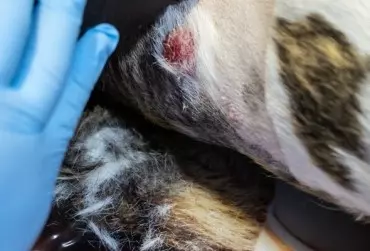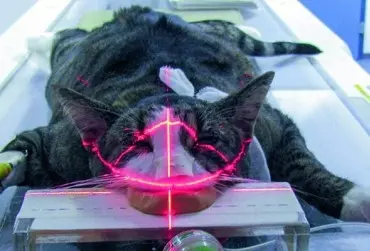Chłoniak epiteliotropowy jest nietypową formą chłoniaka atakującą głównie skórę, błony śluzowe oraz przejście błony śluzowej w skórę. Pochodzi on głównie w limfocytów T, z charakterystycznym fenotypem komórkowym CD3+ i CD4–/CD8+ kompatybilnym z fenotypem limfocytów T cytotoksycznych. Rozpoznawane są trzy formy chłoniaka epiteliotropowego u ludzi i psów, mianowicie mycosis fungoides, Sézary syndrome oraz pagetoid reticulosis. W przebiegu choroby można wyróżnić kilka stadiów, które czasami płynnie przechodzą jedna w drugą. Histopatologia odgrywa bardzo ważną rolę w diagnostyce tego nowotworu, dlatego też biopsja powinna być zawsze pobierana u pacjentów z podejrzeniem tego nowotworu. Nowotwór ten może się rozwijać i postępować miesiącami. Leczenie tego typu chłoniaka jest ciężkie i znacznej większości przypadków paliatywne. Chemioterapia, radioterapia, chirurgia, analogi witaminy A, leki celowane są używane w jego terapii. W tym artykule opisana będzie charakterystyka ogólna tego chłoniaka oraz najczęściej używane metody stosowane w jego leczeniu.
Epitheliotropic lymphoma is an unusual form of lymphoma affecting mainly skin, mucous membranes and mucocutaneous junctions. It is derived from T cell lymphocytes with a characteristic phenotype CD3+ i CD4–/CD8+ which is compatible with cytotoxic lymphocytes phenotype. Three forms of this neoplasm are recognised in people and dogs, namely: mycosis fungoides, Sézary syndrome, pagetoid reticulosis. There are few stages observed throughout the course of the disease. Histopathology is crucial in diagnosing this neoplasm therefore all patients suspected to suffer from this disease should have a biopsy sample taken for histopathological analysis. This neoplasm progresses slowly and oftentimes the subtle clinical signs may be present for months to years before they start bothering the patient and its owner. Treatment of epitheliotropic lymphoma in dogs is difficult/challenging and mainly palliative. Chemotherapy,surgery, radiotherapy, topical and systemic retinoids, topical and systemic glucocorticoids, tyrosine kinase inhibitors are all described in the literature and used with various success. In this article, the author describes the overall characteristic of this neoplasm in dogs and the therapeutics used most often in the management of this disease





